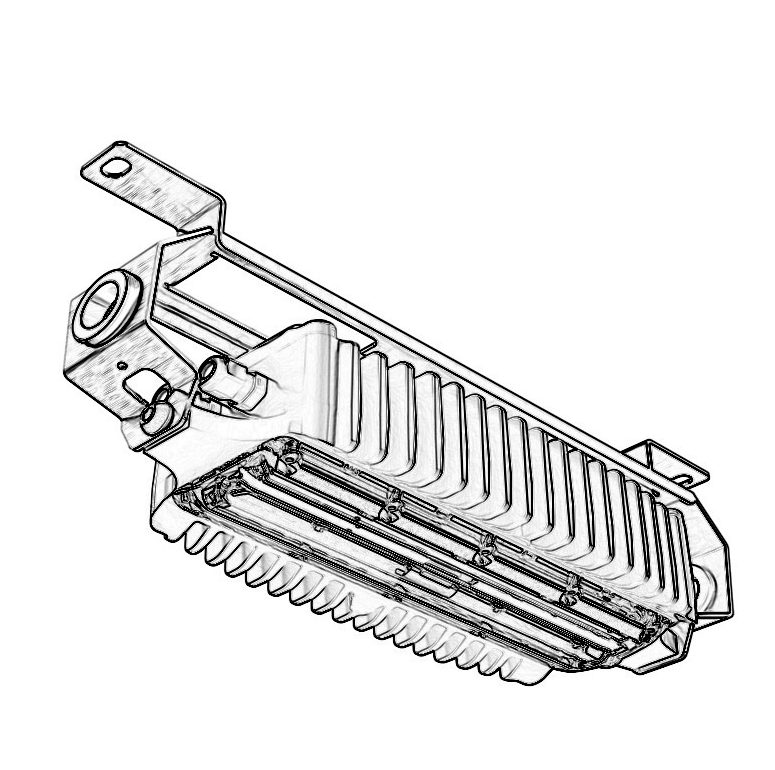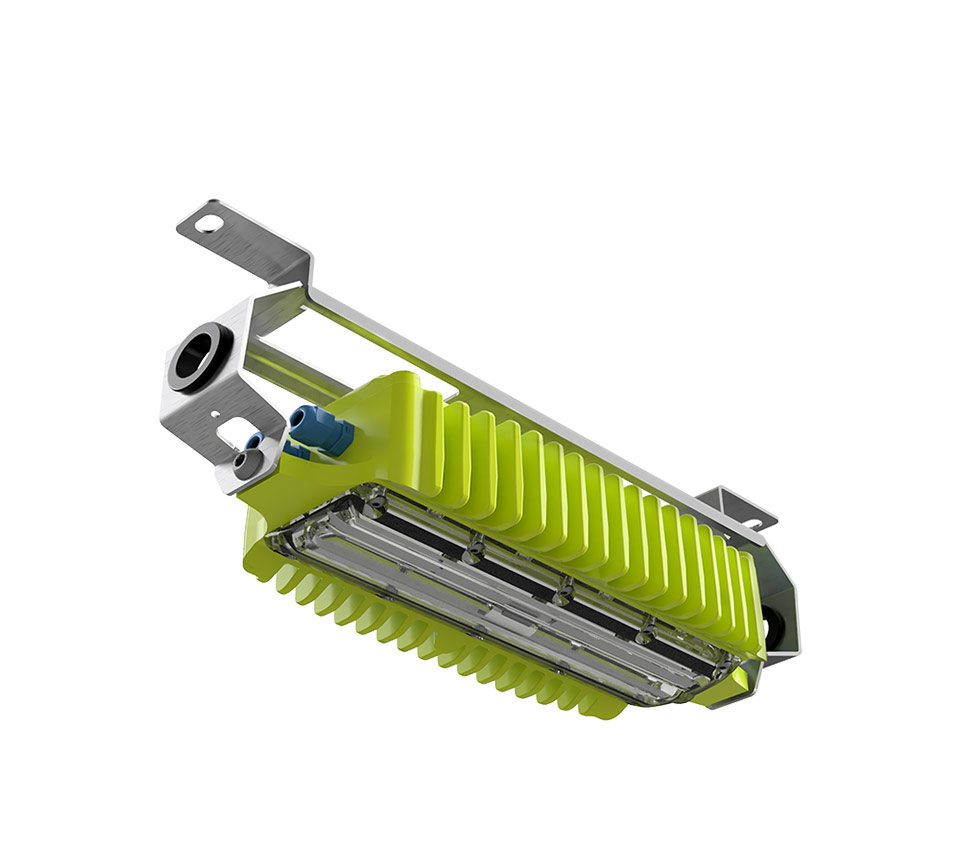Products » Poultry LED Lighting » LED poultry house lighting
LED poultry house lighting, indoor/outdoor barn lights
The visual performance of humans and birds differs fundamentally.

Products » Poultry LED Lighting » LED poultry house lighting
The visual performance of humans and birds differs fundamentally.

In terms of speed, chickens and birds are significantly ahead of us:
Compared to humans, birds and chickens perceive things three to five times faster (> 100 frames/second).
The spectral composition of light can also have a significant influence on the welfare of poultry farm animals. For example, it can be assumed that without UV-A content in the light, animals perceive their environment in false colors.
For birds and poultry, this can quickly become a problem in stables:
A 50-hertz incandescent lamp looks quite normal to us. For poultry, however, the light flickers continuously. One can compare the effect approximately with Disko light for the human eye. It is obvious that this can lead to stress during even short light periods. Window glass filters besides the UV components important for the birds to large parts.
It is undisputed: Natural daylight is ideal for animals. It is therefore desirable that the artificial light as as far as possible dits natural habitat of animals and their meets individual needs.

With this in mind, the Gallux coop light was developed: Gallux is a highly modern 3rd generation LED luminaire designed specifically for birds.
A whole six different spectral bands with UV and infrared components ensure that your birds are also offered the ideal light in the barn at any time of year.
With these components, the luminaire copies natural daylight directly into the barn and is guaranteed flicker-free at 5,000 Hz.
.
The objective of the farmer was to optimize the laying performance (or fertilization rate) and minimize losses. The practical studies, which were conducted throughout Germany in conventional and organic farms, used different light spectra.
Surprisingly, it turned out that colder light tones in the morning helped the animals to an active day start. Feed intake and laying performance could thus be noticeably supported in various laying as well as fattening breeds. At noon, farms with warmer tones lowered activity in the barn, which in turn stimulated insemination (in parent-grandparent animal poultry farms). The proportion of classware in hatching egg production was increased by 8% in the trial, solely through the use of Gallux. Losses showed a significant decrease in the field studies. The longevity of the hens could be halved and also the losses of cockerels were minimized from 3.62% to 1.96%.
In addition, a support of the stress reduction was desired. So far, often from about production week 30 – 40 increased losses are recorded, which are due to feather pecking and cannibalism. To prevent greater losses, it is often common practice to dim the light intensity and add red tones to the misbehavior. An effective measure, which pushes to the borders of the legally prescribed 20Lux in the stable.
During the practice investigations with Gallux one determined that the behavior of the animals can be optimized likewise with a cooler daylight clay/tone (inclusive UV addition). Through the controlled addition of natural UV components, the animals were able to develop and consolidate their social behavior more easily. A method that led to significantly fewer animal and laying losses in the test series. Pick and cannibalism behavior could thus be largely counteracted and even eliminated, even under light conditions of >150 lux.
For fattening, the main focus in the field studies with Gallux was on the feed conversion of the animals. The animals should gain weight evenly, exhibit a strong skeleton and healthier footpads, and achieve a clean growth curve. Considered, in addition to a dark period of min. 6 hours daily, was optimal support throughout the fattening period. In the test barns with Gallux, one of the tasks was to give the animals a strong start in the first 6-7 days without leading to later problems due to too fast, early growth. A too cold (blue) light spectrum initially led to too rapid development. Green light caused the animals’ activity to increase. Red light had a calming effect during the studies, but also decreased feed intake. Therefore, a fattening period was shown to be most effective, with sensitive color variation in the different
phases. The field studies showed that the application of a changing light composition over a period of 40 days, could lead to a better distribution, less discard at slaughter and a better controlled and more uniform growth process with higher body weight. In the field studies with Gallux, discard was reduced by 40% compared to the comparison group.
In the practical tests with Gallux, the option of dividing the poultry barn into additional illuminated zones was also used. In this way, areas with lighting conditions that were more unpleasant for the poultry animals were offered to stressed, low-ranking and/or injured poultry animals as retreats for regeneration.
By means of slight color changes, the innovative poultry luminaire thus provided very well accepted, spacious resting zones, which the chicken and birds could visit and leave according to their own needs.
The surprising and significant results show that innovative LED technology can increase profitability and poultry animal welfare at an acceptable cost.
All prices incl. VAT.
All striked out prices refer to prices used to be charged at this shop.